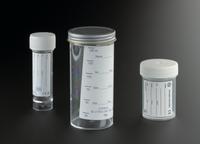





Lister phenol spray, copper tank standing on brass frame, large wooden handle at side, two outlets for tubes, (missing), English, 1869-1890
Joseph Lister (1827-1912) invented the carbolic acid spray in the belief that most infection-causing germs were in the air. The steam spray covered everyone and everything in the operating room or hospital ward with a vapour of carbolic acid or phenol, creating an antiseptic environment. The steam spray meant that an assistant was not required to work a cumbersome pump. Lister eventually abandoned the spray in 1887 as he found that germs carried on fingers, dressings, and the skin of the patient were more important. The spray came with its own disadvantages as inhaling carbolic acid is dangerous.
Details
- Category:
- Surgery
- Collection:
- Sir Henry Wellcome's Museum Collection
- Object Number:
- A659648
- Materials:
- copper, brass and wood, handle
- Measurements:
-
overall: 264 mm x 122 mm x 255 mm, 1.04kg
- type:
- carbolic spray
- credit:
- Loan, Wellcome Trust




